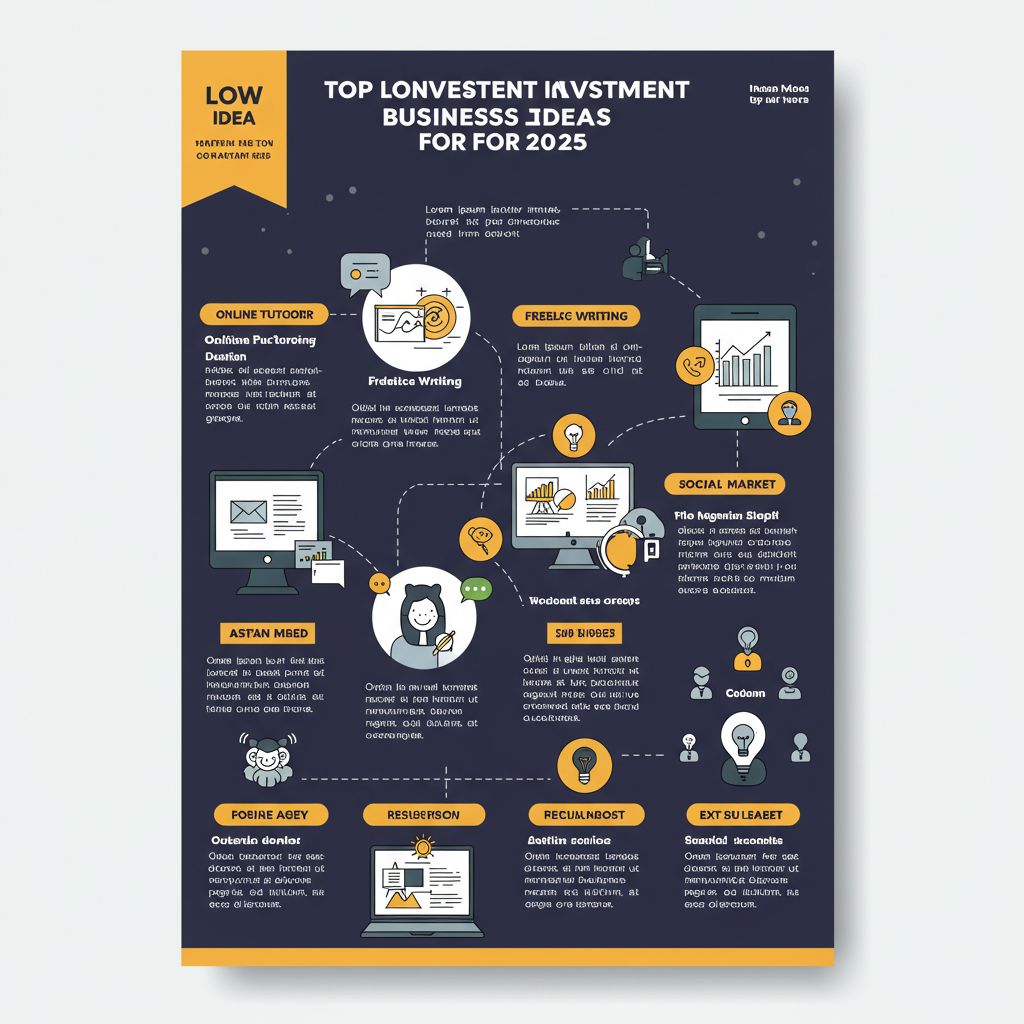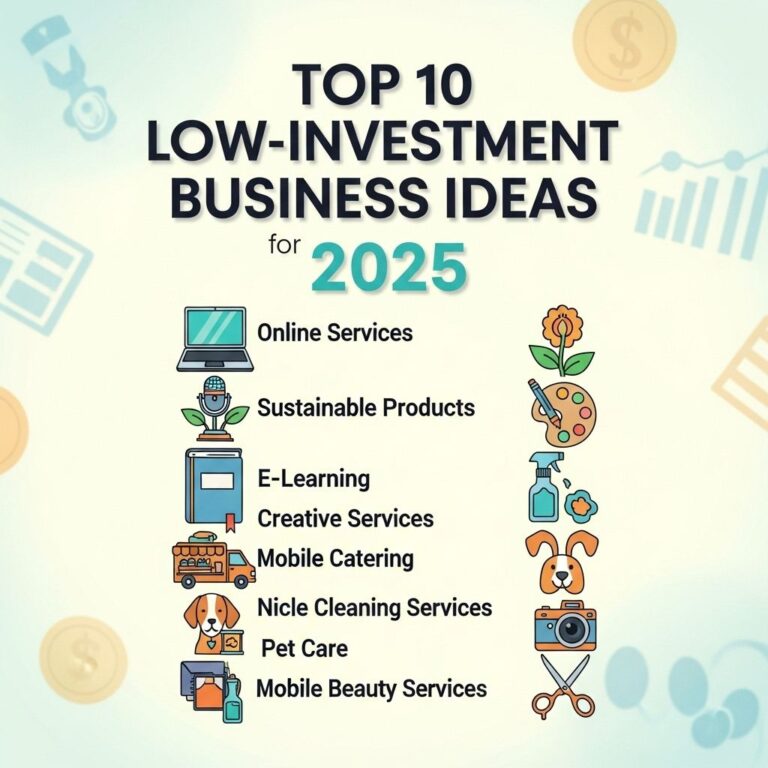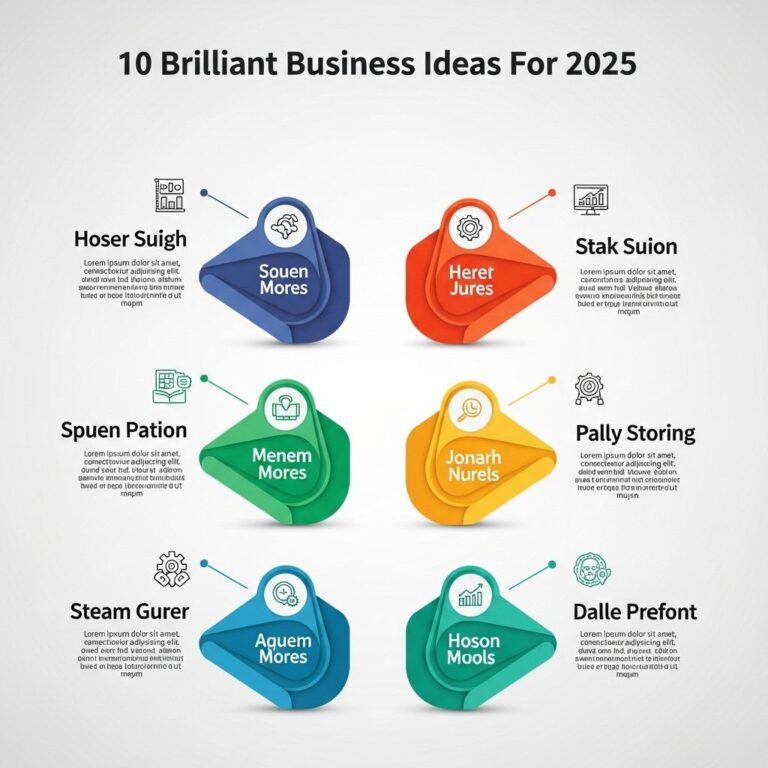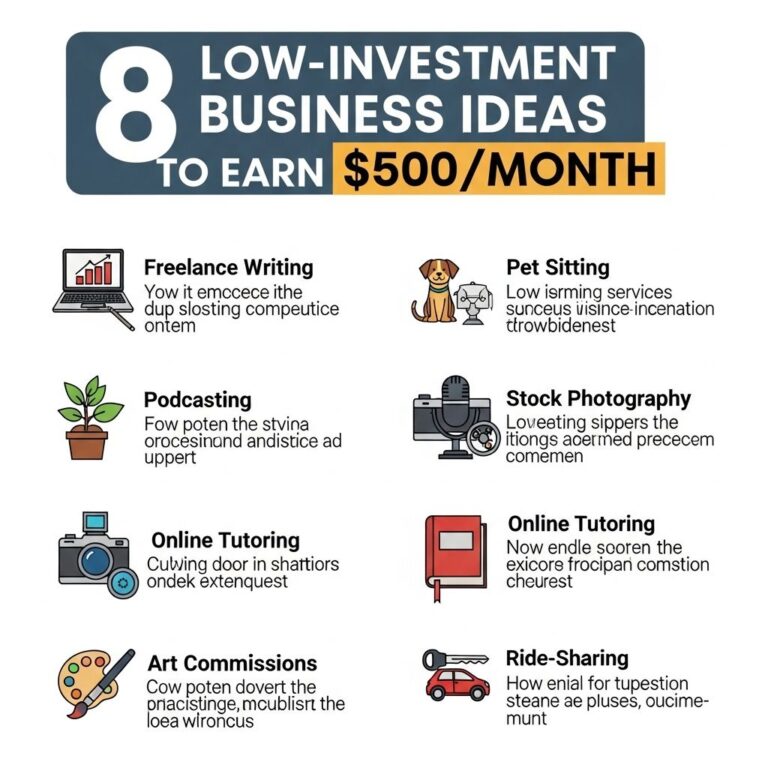As we move further into 2025, the landscape of entrepreneurship continues to evolve. With the rise of technology, shifting consumer behavior, and a growing emphasis on sustainability, there are numerous low-investment business ideas that aspiring entrepreneurs can explore. Whether you’re looking for a side hustle or a full-fledged business, the opportunities are abundant and accessible. In this article, we will delve into several promising low-investment business ideas that can thrive in the current market.
Table of Contents
Understanding Low-Investment Business Models
Low-investment business models typically require minimal startup costs and can often be operated remotely or from home. They are ideal for individuals seeking flexible work arrangements and those looking to test the waters of entrepreneurship with limited financial risk. Here are key characteristics of low-investment business models:
- Minimal overhead costs
- Flexibility in operation (e.g., online or part-time)
- Ability to scale quickly
- Low barrier to entry
Freelancing and Consulting Services
One of the most accessible business ideas is offering freelance services or consulting in your area of expertise. With platforms like Upwork, Fiverr, and Freelancer, you can connect with clients worldwide.
How to Get Started
- Identify your skills: Determine what services you can offer, such as graphic design, writing, web development, marketing, or business consulting.
- Create an online portfolio: Showcase your work to attract potential clients.
- Join freelance platforms: Sign up on various platforms to find job postings and start bidding on projects.
Benefits of Freelancing
- Flexible schedule
- Opportunity to work with diverse clients
- No significant upfront investment required
Dropshipping and E-commerce
Dropshipping has gained immense popularity as a low-investment e-commerce model. You can sell products online without holding inventory, as suppliers ship products directly to customers.
Steps to Launch a Dropshipping Business
- Choose a niche: Research and select a niche that interests you and has market demand.
- Find reliable suppliers: Use platforms like AliExpress or Oberlo to find suppliers who offer dropshipping services.
- Set up an online store: Create a user-friendly website using platforms like Shopify or WooCommerce.
- Market your products: Utilize social media, SEO, and online ads to drive traffic to your store.
Pros and Cons of Dropshipping
| Pros | Cons |
|---|---|
| Low startup costs | Lower profit margins |
| No inventory management | Reliance on suppliers |
| Flexible location | Competitive market |
Digital Content Creation
With the increasing consumption of online content, becoming a digital content creator is a viable business idea. This can include blogging, vlogging, podcasting, or creating online courses.
Starting Your Content Creation Journey
- Identify your niche: Focus on a specific topic you are passionate about, be it technology, travel, health, or personal finance.
- Create quality content: Invest time in producing engaging and high-quality content to attract an audience.
- Monetize your content: Utilize affiliate marketing, sponsored posts, or sell digital products.
Advantages of Digital Content Creation
- Potential for passive income
- Building a personal brand
- No upfront costs for content creation
Online Tutoring and Coaching
The demand for online education and coaching has soared in recent years. If you have expertise in a particular subject or skill, consider offering online tutoring or coaching services.
Steps to Become an Online Tutor/Coach
- Choose your subject: Select a subject or skill you are qualified to teach.
- Set up a website: Create a professional website to showcase your services.
- Market your services: Use social media, online forums, and local communities to promote your tutoring or coaching services.
Benefits of Online Tutoring/Coaching
- High demand for personalized learning
- Flexibility in scheduling
- Ability to work with clients globally
Social Media Management
As businesses increasingly recognize the importance of maintaining a robust online presence, social media management has become a sought-after service. If you have a knack for social media, consider becoming a social media manager.
Getting Started in Social Media Management
- Develop your skills: Familiarize yourself with various social media platforms and tools.
- Create a portfolio: Showcase examples of your work or create sample social media campaigns.
- Reach out to local businesses: Offer your services to small businesses that may need assistance managing their social media.
Advantages of Social Media Management
- Growing demand for social media services
- Opportunity to work with diverse clients
- Potential for long-term contracts
Virtual Assistant Services
As more businesses operate online, the demand for virtual assistants (VAs) has surged. VAs can help businesses manage administrative tasks, customer service, and other operations.
How to Start as a Virtual Assistant
- Identify your skills: Determine which administrative tasks you can offer, such as scheduling, email management, and data entry.
- Build a presence: Create a website or use platforms like LinkedIn to showcase your services.
- Network: Connect with entrepreneurs and businesses that may need virtual assistance.
Benefits of Being a Virtual Assistant
- Work from anywhere
- Diverse range of tasks
- Flexible hours
Affiliate Marketing
Affiliate marketing allows you to earn commissions by promoting other people’s products or services. With a low entry threshold, it’s an attractive business model for many.
Steps to Get Started with Affiliate Marketing
- Choose a niche: Focus on a specific market that interests you.
- Join affiliate programs: Sign up for affiliate programs related to your niche.
- Promote products: Use content marketing, social media, or email marketing to promote affiliate products.
Pros and Cons of Affiliate Marketing
| Pros | Cons |
|---|---|
| Low startup costs | Dependence on third-party products |
| Potential for passive income | Requires ongoing marketing effort |
| Flexibility in working hours | Commission-based earnings |
Conclusion
2025 presents numerous opportunities for low-investment business ideas across various sectors. From freelancing and e-commerce to content creation and social media management, entrepreneurs can start their ventures with limited capital and resources. By leveraging your skills, utilizing online platforms, and staying adaptable to market trends, you can successfully establish a business that meets the demands of today’s consumers. The key is to take action, remain committed, and continuously learn and evolve in your chosen field.
FAQ
What are some low investment business ideas for 2025?
Some top low investment business ideas for 2025 include dropshipping, freelance services, social media consulting, online tutoring, and digital product creation.
How can I start a dropshipping business with minimal investment?
To start a dropshipping business with minimal investment, choose a niche, find reliable suppliers, create an online store using platforms like Shopify, and market your products through social media and SEO.
What freelance services are in demand for 2025?
In 2025, freelance services in demand include graphic design, content writing, digital marketing, web development, and virtual assistance.
Is online tutoring a viable business option for 2025?
Yes, online tutoring is a viable business option for 2025, especially as more students seek personalized learning experiences and flexible schedules.
How can I create digital products to sell?
You can create digital products to sell by developing eBooks, online courses, printables, or stock photos that cater to a specific audience or niche.
What are the benefits of starting a low investment business?
The benefits of starting a low investment business include reduced financial risk, the ability to test ideas quickly, and increased flexibility in managing your time and resources.








